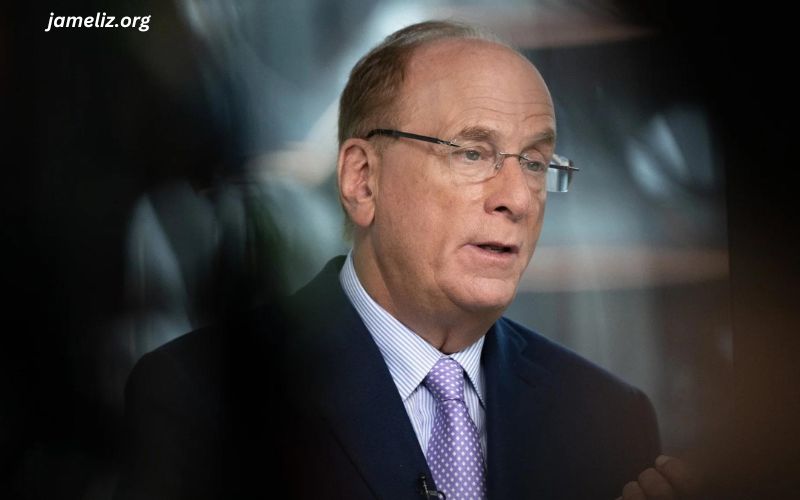BlackRock, Inc., the world’s largest asset management firm, is synonymous with influential leadership and profound market impact. Central to this narrative is its long-standing CEO, Laurence D. Fink, whose strategic vision has steered the company to unparalleled heights. However, as discussions around retirement age surface, the financial community and BlackRock’s stakeholders are keenly focused on what the future holds. This article delves into the implications of CEO retirement age at BlackRock, considering industry norms, succession planning, and the broader impact on the company’s strategic direction.
BlackRock’s Leadership and Laurence D. Fink’s Legacy
Laurence D. Fink, co-founder and CEO of BlackRock, has been instrumental in transforming the company from a small bond firm into a global powerhouse with over $9 trillion in assets under management. His leadership style, characterized by foresight, innovation, and a deep understanding of market dynamics, has been pivotal to BlackRock’s success. Fink’s tenure has seen the company navigate numerous financial crises, expand its global footprint, and lead the charge in integrating environmental, social, and governance (ESG) criteria into investment strategies.
The Importance of Leadership Continuity in Financial Firms
Leadership continuity is crucial in financial firms, where market confidence and stability are paramount. A sudden or poorly managed transition can lead to uncertainty, potentially impacting stock prices and investor confidence. Therefore, discussions around CEO retirement age at BlackRock are not merely about a date on the calendar but about ensuring a seamless transition that preserves the company’s momentum and strategic vision.
Industry Norms and CEO Retirement Age
In the financial services industry, the retirement age for CEOs varies, with many firms setting informal guidelines around 65 to 70 years. For instance, Goldman Sachs has a retirement age of 65, while JPMorgan Chase’s Jamie Dimon has remained CEO into his mid-60s, reflecting a flexible approach based on performance and company needs. Laurence Fink, born in 1952, would typically fall within this retirement window, raising questions about BlackRock’s plans for leadership transition.
BlackRock’s Succession Planning
BlackRock, like other major firms, places a strong emphasis on succession planning to ensure leadership continuity. Succession planning at BlackRock involves identifying and grooming potential leaders well in advance, ensuring they are ready to step into key roles when the time comes. This approach minimizes disruptions and maintains investor confidence.
- Identifying Potential Successors: BlackRock’s bench of potential successors is likely deep, given the firm’s emphasis on leadership development. Key executives such as Robert Kapito, BlackRock’s President, and Rob Goldstein, Chief Operating Officer, are often mentioned in discussions about future leadership.
- Developing Future Leaders: BlackRock invests heavily in leadership development programs, ensuring that potential successors are well-versed in the company’s culture, strategy, and operational nuances. This includes rotational assignments, mentorship programs, and exposure to different facets of the business.
- Ensuring Strategic Continuity: Any leadership transition at BlackRock will be carefully managed to ensure strategic continuity. This means that the new CEO will likely continue to uphold the principles and strategic directions that have been foundational to BlackRock’s success, including a strong emphasis on ESG and technological innovation.
The Broader Impact on BlackRock’s Strategic Direction
The retirement of a CEO, especially one as influential as Laurence Fink, has broader implications for the company’s strategic direction. Fink’s leadership has been marked by a proactive approach to market trends and societal shifts. His advocacy for ESG investing, for instance, has positioned BlackRock as a leader in sustainable finance.
- Sustainable Investing: Under Fink’s leadership, BlackRock has championed sustainable investing, integrating ESG factors into its investment processes. The new CEO will need to maintain this momentum, continuing to push for responsible investing practices that meet the growing demand from investors.
- Technological Innovation: BlackRock has also been at the forefront of leveraging technology to enhance investment processes and client experiences. Aladdin, BlackRock’s proprietary investment management platform, is a testament to this focus. The incoming CEO will need to ensure that BlackRock remains a leader in fintech innovation.
- Global Expansion: BlackRock’s global footprint is extensive, with operations in over 30 countries. Continued global expansion, particularly in emerging markets, will be a key strategic focus. The new CEO will need to navigate geopolitical complexities and market dynamics to drive growth in these regions.
Challenges and Opportunities
- Market Dynamics: The global financial markets are in a constant state of flux, influenced by economic cycles, regulatory changes, and geopolitical events. The new CEO will need to adeptly navigate these dynamics, ensuring that BlackRock remains resilient and adaptable.
- Regulatory Landscape: The regulatory environment for financial firms is becoming increasingly complex. The new CEO will need to engage with regulators, ensuring compliance while advocating for policies that support the growth and stability of the financial industry.
- Talent Management: Attracting and retaining top talent is critical for BlackRock’s continued success. The new CEO will need to foster a culture of innovation, inclusivity, and excellence to ensure that BlackRock remains an employer of choice in the financial industry.
Stakeholder Perspectives
- Investors: Investors will be closely watching the leadership transition, looking for assurances that BlackRock’s strategic direction will remain consistent. Clear communication about succession plans and strategic priorities will be essential to maintain investor confidence.
- Employees: For BlackRock employees, a leadership transition can be both an opportunity and a period of uncertainty. Ensuring clear communication and a smooth transition process will be key to maintaining morale and engagement among the workforce.
- Clients: BlackRock’s clients, including institutional investors, governments, and individual investors, will be keenly interested in how the leadership transition impacts the firm’s ability to deliver value and maintain high standards of service.
Conclusion
The discussion around CEO retirement age at BlackRock and the potential retirement of Laurence D. Fink is a significant event in the financial industry. As the world’s largest asset manager, BlackRock’s leadership transition will be closely scrutinized by investors, regulators, and the broader market. Ensuring a seamless transition that upholds BlackRock’s strategic vision, maintains market confidence, and continues to drive innovation and sustainable investing will be paramount.
Laurence Fink’s legacy at BlackRock is one of visionary leadership and profound impact. As the company prepares for the eventual leadership transition, the focus will be on continuity, strategic alignment, and leveraging the strengths of a deeply experienced leadership team. The next chapter in BlackRock’s storied history will build on the solid foundation laid by Fink, ensuring that the company continues to lead, innovate, and drive positive change in the global financial landscape.

